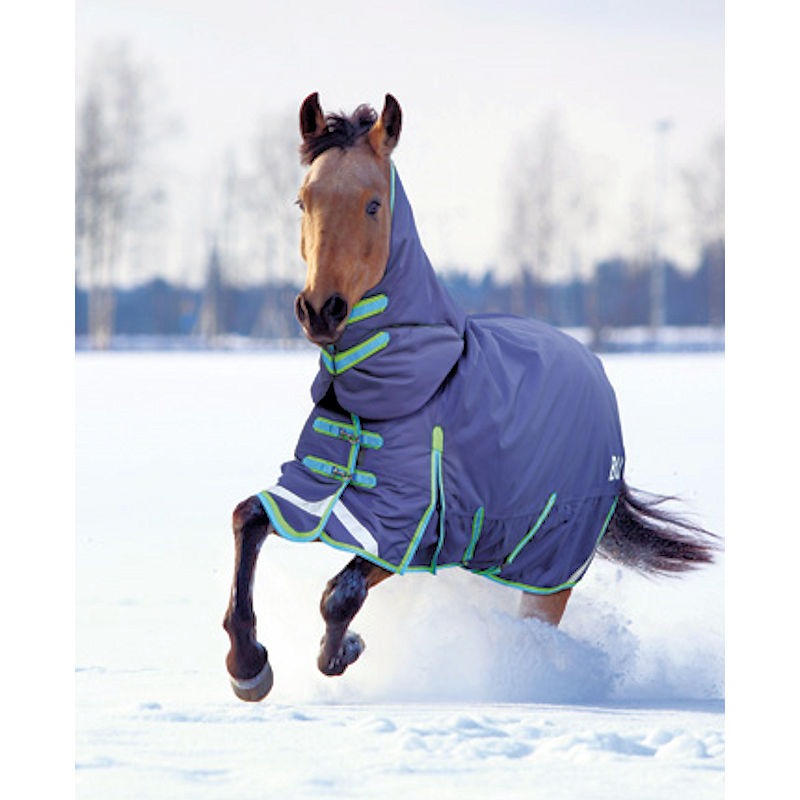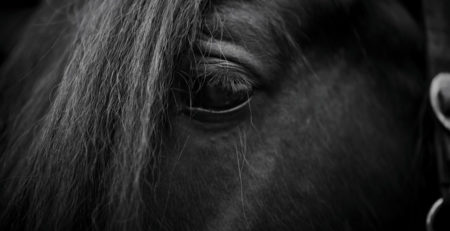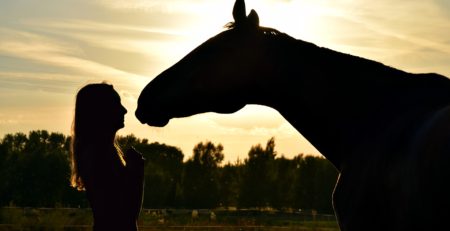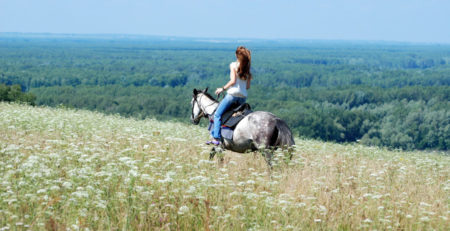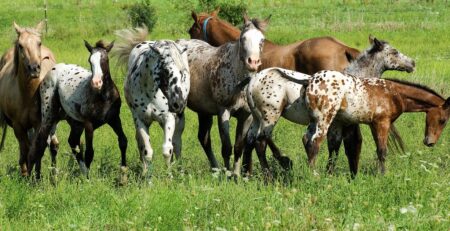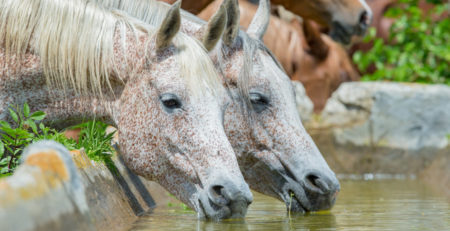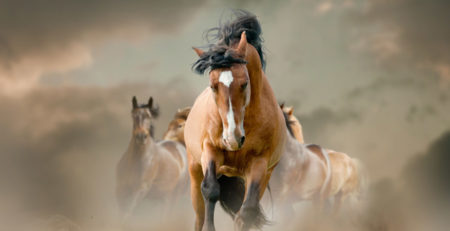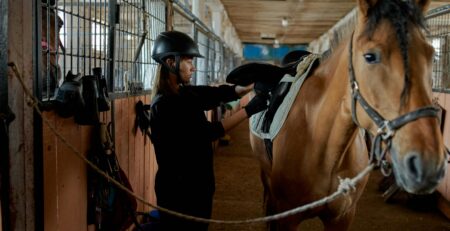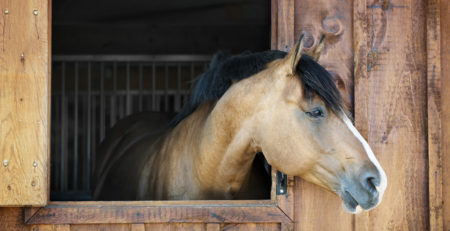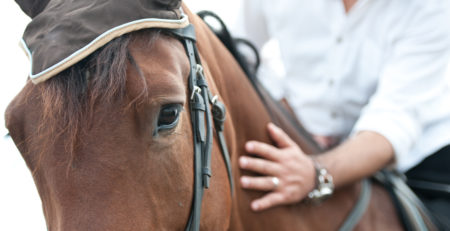Prepare Your Horse For Winter
Caring for a horse means you have to be ready for all weather conditions. When the temperature starts to fall, you should be prepared with the proper gear, supplies and accessories to keep your horse healthy and happy during the winter months.
Water and Food
Your horse’s dietary needs can increase during the colder months, especially as food digestion is a primary source of warmth.
- Food for Health and Warmth. Use quality forage, combined with grain, as recommended by an equine nutritionist to sustain warmth and maintain caloric intake. Hay alone is not enough, as it is dried and stored it loses some of its nutritional value, so you may want to consider a vitamin supplement, and a joint supplement if your horse is older.
- Water. Even though your horse might eat snow while they’re outside, fresh water is still important for wintertime hydration. A supply of (non-frozen) water, ideally above 45 degrees, will keep your horse hydrated and help their digestion.
- Mouth Health. Healthy mouth and teeth enable your horse to drink and eat without discomfort. It’s wise to have a vet check your horse’s teeth and mouth to ensure they can eat comfortably and maintain the right caloric intake for weight maintenance throughout winter.
Comfort and Warmth
Your horse may enjoy the colder weather but you will still need to ensure they are kept warm and sheltered
- Your Horse’s Natural Coat. If possible, allow your horse’s coat to grow during the winter months. Its natural thickness provides your horse with the extra insulation needed to keep its body warm as the weather gets colder, as a layer of warm air is trapped below the surface.
- Provide Extra Warmth. There are times when you must clip your horse’s coat to keep them cool while working in the winter or in preparation for a show. For this reason, or because you’ve got an older horse, extra warmth can increase the horse’s comfort throughout winter. A waterproof, breathable blanket or coat will come in handy for days when your horse needs an extra layer to stay warm.
- Rugs maintenance. Make sure rugs are clean and waterproofed to provide maximum benefit
- Shelter During Winter. The warmest natural coat isn’t always enough to protect your horse from really cold temperatures. A strong wind can cut right through them, and a wet coat can quickly lose its insulating ability. Provide your horse with shelter from wind, snow and rain so they can enjoy pasture time and still have access to an area that will protect them from the elements.
- Wintertime Riding. When riding your horse during the winter months, be careful to warm them up properly and ensure any sweaty areas are fully dried since this can cause the horse to later become chilled. Likewise, maintain care of horse riding tack and the proper saddle so that it doesn’t become cracked and dry from the cold air, causing it to become less effective.
Health
- Controlling Parasites. Consult with your vet concerning wintertime parasite control. Once the first frost has occurred, you may want to give your horse something to kill bot larvae.
- Barn Pest Control. People and horses aren’t the only creatures that seek warm places in wintertime. Other pests are likely to find their way into the barn. Discourage and control pests by keeping food storage in sealed containers and store blankets, leather products and other materials that could be used for nests in sealed storage spaces.
- Vaccinations. Good health is vital to staying comfortable and warm from the first frost until the temperatures begin to rise again. Part of your effort to maintain your horse’s health should include any necessary vaccinations as autumn transitions to winter.
- Take Care of Hooves. Hoof growth occurs throughout the year. Maintain hoof care year-round. Consider having your farrier use winter studs for traction and snowball pads to keep snow from accumulating inside the bottom of the hoof.
- Legs – Check your horse’s legs daily for mud fever/cracked heels as these problems can be common in wet muddy conditions.
How to tell if your horse is cold?
- Feel their ears or under their rug? Though if your hands are warm or very cold, this may be misleading.
- Is your horse constantly moving? If your horse has started to run around their pasture much more than normal and there’s no obvious sign of distress then they could be doing this to keep warm.
- Is a group of horses gathered together? While it’s not always the case that they’re cold horse do often huddle together to keep warm and dry. If your horse is cuddling up to the other horses more than usual it could be because they’re cold.
- Is your horse shivering? While this might seem like an obvious sign of being cold it can often be overlooked. If your horse has been in a warm saddle overnight they may well shiver when you first turn them out, this is normal but what’s more important are they still shivering a long time after?
- Check Vital Signs. The most reliable way of telling if your horse is cold though is to check his vital signs. Checking these will not only tell you their temperature (and therefore whether they’re cold or not) but will also indicate if there’s something else wrong too.

